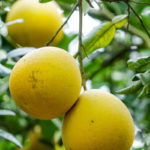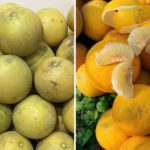It’s undeniable that grapefruit offers a plethora of health benefits to humans. Apart from its medicinal properties, which have been scientifically proven, it also works wonders for one’s beauty and overall well-being. Grapefruit is an excellent source of vitamin C, which boosts the immune system, acts as an antioxidant, and helps reduce stress and asthma-related issues. Additionally, the abundant presence of vitamins A and C helps maintain skin moisture, protecting it from dryness and ailments such as psoriasis, acne, and wrinkles.
1 How to Choose Delicious Nam Roi Grapefruit

Grapefruit Stems: A withered stem indicates an older fruit that was picked a while ago. Conversely, a fresh stem signifies a recently picked grapefruit.
Grapefruit Peel: Uniform and large bumps on the peel indicate older fruit, while smaller bumps are characteristic of unripe grapefruits. Alternatively, you can gently pat the grapefruit to gauge the thickness of the peel. A firm yet lightweight grapefruit with a thin peel is a good indicator of a delicious fruit. However, thick-peeled grapefruits are unpredictable in terms of taste.
Weight: Nam Roi grapefruits typically weigh around 1 kg, and those grown with a specific technique can reach up to 2 kg. Avoid purchasing grapefruits weighing less than 1 kg.
2 How to Choose Delicious Dien Grapefruit
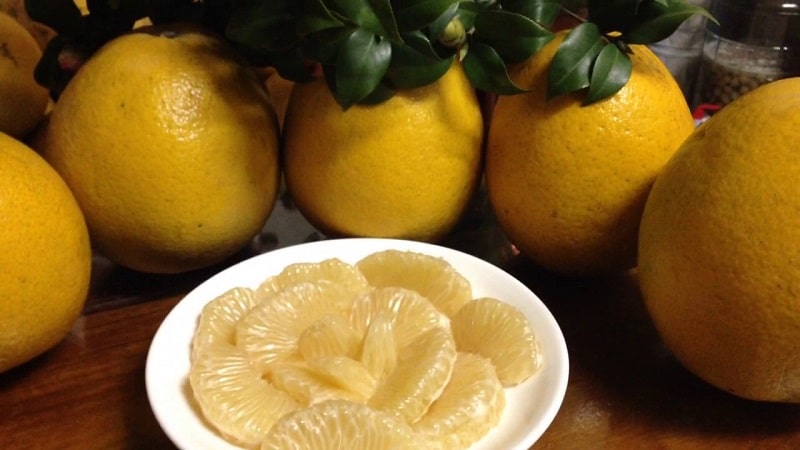
Shape and Color: Look for round-shaped grapefruits with smooth peels. Ripe Dien grapefruits have an orange-yellow hue and feel heavy for their size. The average weight ranges from 800 grams to 1 kilogram. The best grapefruits are spherical and have a deep orange or reddish-yellow color.
Size: For Dien grapefruits, opt for medium-sized fruits (approximately three handfuls). Larger fruits tend to be drier and only mildly sweet.
Peel and Aroma: Choose firm fruits with small stems, thin peels, and a slightly sun-kissed appearance. These grapefruits will be sweeter and more flavorful than those with bright yellow peels. After harvesting, the peel shrinks, the fruit becomes juicier, and the taste sweeter—this process takes about one to two months.
Segments: The ideal segments are golden yellow, neither too big nor too small, with thin membranes. The fruit should be dry to the touch, full of juice, and intensely sweet. Additionally, the seeds should be small and firm.
If you’re purchasing Dien grapefruits for religious offerings, opt for freshly cut fruits with green stems and attractive yellow peels. By the time the offering ritual is complete, the grapefruit will be at its sweetest, as the fruit continues to release its juices after being picked.
3 How to Choose Delicious Green-Skinned Grapefruit
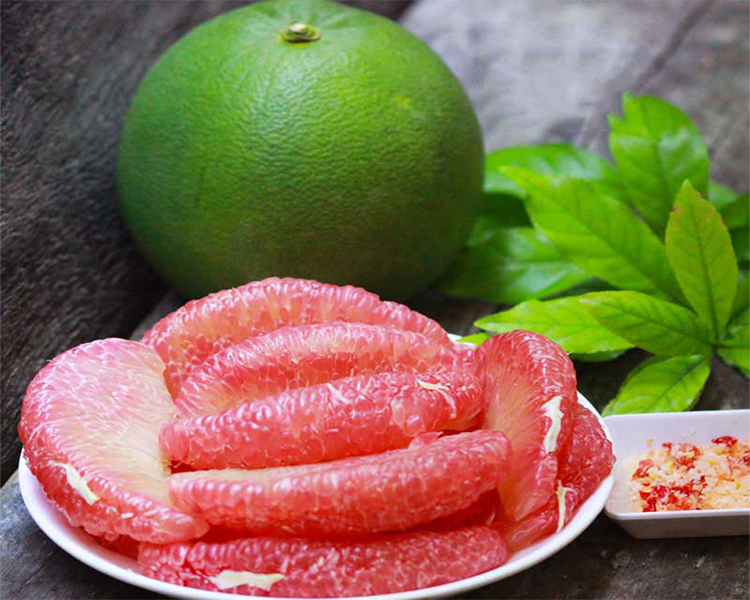
Peel: The skin should be taut, and the bumps evenly distributed. Larger bumps indicate older fruit. Avoid grapefruits with loose skin, as they may be unripe or wilted. Opt for thin-skinned fruits, as they tend to be sweeter and more flavorful. To differentiate between thin and thick-skinned grapefruits, gently tap the fruit. A thin-skinned grapefruit will produce a “clack-clack” sound, while a thick-skinned one will make a “thud-thud” noise. Thick-skinned grapefruits are usually underripe and tend to be sour and dry.
Weight: Choose grapefruits weighing at least 1 kilogram, as they are likely to be riper and juicier.
Stem: Examine the stem to ensure it’s fresh and firmly attached to the fruit. Gently press your finger into the stem; if it leaves an indentation, the grapefruit is fresh. Conversely, a resilient stem indicates an older fruit.
4 How to Choose Delicious Dao Grapefruit

Peel: Opt for grapefruits with bright, taut, and plump peels with large bumps. These characteristics indicate ripe fruit with superior taste and sweetness. Additionally, you can assess the thickness of the peel by gently tapping the grapefruit with your finger. A thin-skinned grapefruit will produce a “clack-clack” sound, while a thick-skinned one will make a “thud-thud” noise. Alternatively, you can use your dominant hand to gently press into the grapefruit. If it feels firm, it’s likely to have a thin peel.
Stem: The stem should be fresh, taut, and slightly yellow.
Shape and Weight: Look for evenly shaped fruits that feel heavier than other grapefruits of similar size. You can use your hands to “weigh” the fruit and get a sense of its density.
5 How to Choose Delicious Phuc Trach Grapefruit

Peel: Choose grapefruits with skins that are neither too smooth nor too rough. Ripe fruits will have a golden yellow hue. Additionally, larger bumps indicate a riper fruit, while smaller bumps signify an unripe grapefruit.
Stem: The stem should be fresh and not protruding. To test its freshness, gently press on the stem; if it leaves an indentation, the fruit is fresh. If not, it has been sitting on the shelf for a while. Opt for grapefruits with slightly concave bases.
Segments: The ideal segments are plump and round, not sticking to the membrane. The flesh should be light pink or white, and the fruit should weigh between 1 and 1.5 kilograms. A typical Phuc Trach grapefruit has 14 to 16 segments. Alternatively, choose a moderately sized grapefruit that feels heavy for its size, avoiding overly large fruits.
6 How to Choose Delicious Doan Hung Grapefruit
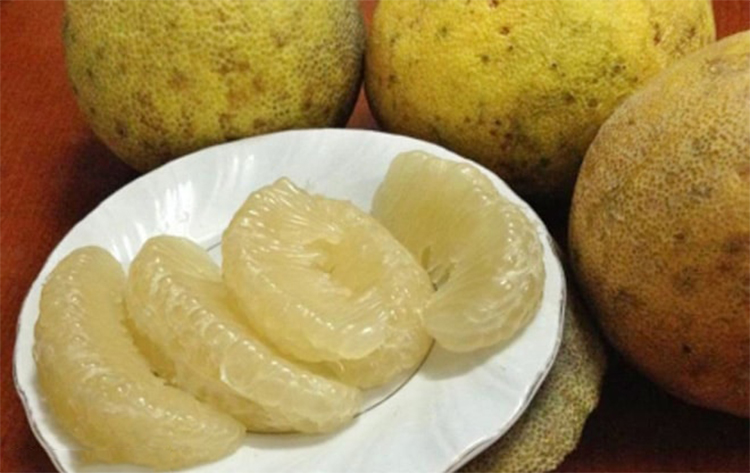
Peel: Look for grapefruits with bright yellow, smooth peels, and as many bumps as possible. Larger bumps indicate a riper fruit, while smaller, denser bumps suggest an unripe grapefruit. Interestingly, Doan Hung grapefruits have a unique characteristic: the ripest fruits have wrinkled peels, unlike other grapefruit varieties, where a fresh appearance indicates ripeness. The wrinklier the peel, the sweeter and more delicious the fruit will be.
Weight: These grapefruits typically weigh less than a kilogram—they are moderately sized, neither too big nor too small.
Sound: When tapped, a ripe Doan Hung grapefruit will produce a “clack-clack” sound, indicating a thin-skinned, juicy fruit. Grapefruits with a “thud-thud” sound have thicker peels, resulting in fewer segments and drier flesh.
The above tips will help you select the sweetest and juiciest grapefruits. Remember that the selection process varies depending on the grapefruit variety, so pay attention to these nuances to make the best choice.

























